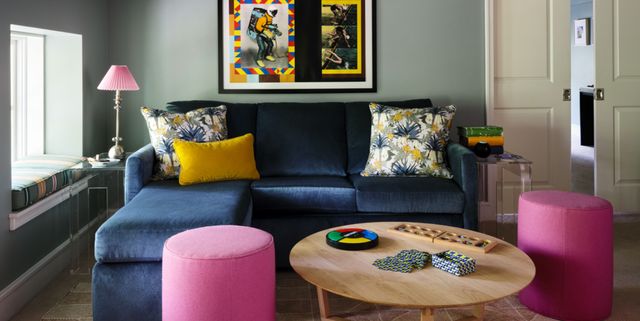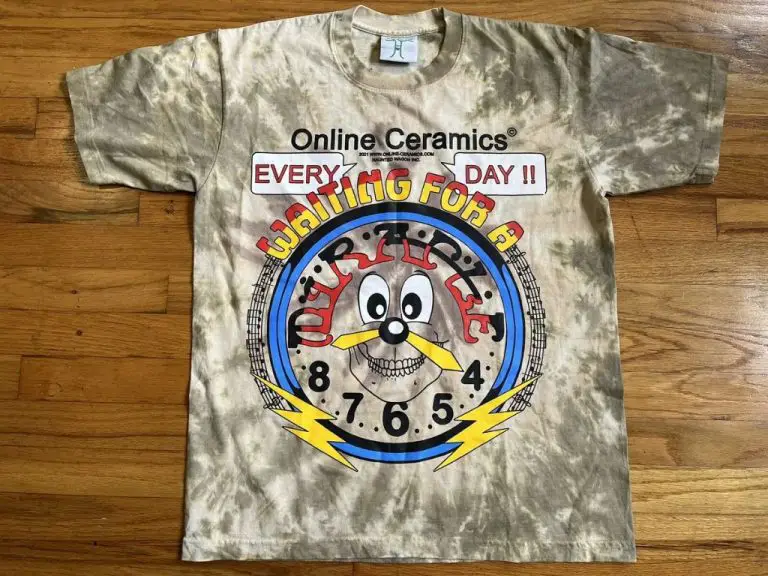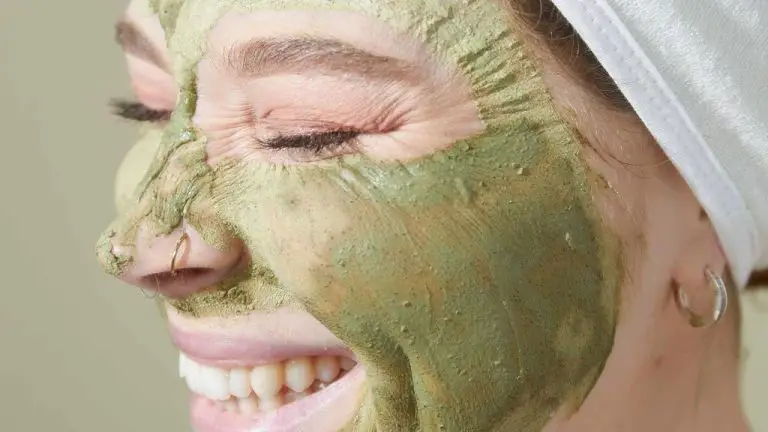What Can I Use Polymer Clay For?
Polymer clay is an extremely versatile modeling material that air-dries at room temperature. It is made from polymers like polyvinyl chloride (PVC) mixed with plasticizers and coloring. The history of polymer clay dates back to the 1930s with the invention of Fimo clay. However, polymer clay didn’t really take off until the 1980s and 1990s when brands like Sculpey introduced new formulas in a wide variety of colors.
There are several main types of polymer clay:
- Original Sculpey – A soft, pliable clay good for hand modeling
- Premo Sculpey – Doesn’t soften and blend as easily but holds fine detail well
- Fimo – Produced by the company that invented polymer clay, known for its consistency
- Cernit – An extremely soft clay that’s very malleable
Polymer clay has many useful properties that make it a versatile art and crafting material:
- Pliable and malleable when conditioned, keeps shape when set
- Doesn’t dry out quickly like natural clays
- Can be sanded, carved, molded, and shaped
- Takes acrylic paints, glitter, and other creative embellishments
- Can be baked at low temperatures to harden it
- Available in every color allowing for vibrant creations
Jewelry Making
Jewelry making is the most common use of polymer clay. The material is perfect for sculpting highly detailed pieces that mimic ceramic, enamel, and metal jewelry.
When baking polymer clay, it hardens into a strong, lightweight plastic that provides an affordable alternative to pricier materials. The finished jewelry is durable and won’t chip or fade over time.
Jewelry artists can roll out thin sheets of clay to cut shapes, or sculpt dimensional designs by hand. Complex patterns, textures, and layering effects are achievable. The lightweight plastic clay holds fine detail well for small, intricate pieces.
Polymer clay can be sanded, buffed, and polished to a bright, glossy finish after baking. Acrylic paints and metallic powders offer limitless color and design options. The clay can also be embedded with semi-precious stones, glass, seashells, beads, and other embellishments.
For jewelry makers, polymer clay is an incredibly versatile and customizable medium. From beads, pendants, charms, and earrings to bangles, rings, brooches, and more – polymer clay brings handmade jewelry crafting to the next level.
Home Decor
Polymer clay is extremely versatile for home decor projects. You can sculpt and bake nearly any shape imaginable to decorate your home. Some popular home decor uses for polymer clay include:
Figurines – Make miniature people, animals, mythical creatures, plants, foods, or abstract shapes to display around your home. The lightweight nature of baked polymer clay makes it easy to arrange a collection of figurines on shelves, tables, or wall mounts.
Vases – Sculpt vases in any size and shape, then paint or leave them plain after baking. Polymer clay vases make wonderful accents for floral arrangements or on their own as decor.
Bowls – Craft decorative bowls for fruit, keys, potpourri, candles, and more. Add patterns, textures, or dimensional shapes to make each bowl unique.
Faux Stained Glass – Roll out thin sheets of polymer clay and cut into geometric or organic shapes. Layer the pieces before baking for an eye-catching stained glass effect. Hang in a window or use as wall art.
The lightweight and durable nature of polymer clay makes it an accessible medium for all levels of crafters. With some creativity and practice, you can design home accents to match any decor style.
Miniatures
Polymer clay is a great material for crafting miniature models like dollhouse items. Its malleable texture makes it easy to sculpt intricate designs and fine details. Miniaturists love working with polymer clay because it can be formed into tiny, delicate shapes that are difficult to achieve with other materials.
Once baked, polymer clay hardens while still retaining all of the modeled details. This allows miniatures artists to create stable 3D objects that are durable enough for play but still have an impressive level of realism and craftsmanship. From dollhouse furniture, decorative pieces, and room accessories to model train layouts, fantasy miniatures, and more, polymer clay is versatile enough to be used across all scales of miniatures.
Some of the advantages of using polymer clay for miniatures include:
- Ability to achieve a smooth, flawless surface
- Vast range of colors available including translucent effects
- Does not require additional finishing after baking – ready for use as-is
- Lightweight – easier to work with than many other clays
- Affordable and accessible
With a little creativity and practice, polymer clay opens up a world of possibilities for miniaturists. All of the tiny details that bring miniatures to life can be formed by hand with this user-friendly modeling material.
Arts and Crafts
Polymer clay is great for arts and crafts projects of all kinds. Here are some ideas of how to use it for arts and crafts:
You can make beads, buttons, chess pieces, and more with polymer clay. Simply shape the clay, bake it according to package directions, and you have unique handmade components for jewelry, clothing, games, and general crafting. Polymer clay holds fine detail well, so you can impress designs, shapes, and patterns.
Use baked polymer clay pieces as ornaments for seasons like Christmas and Halloween. Make holiday shapes like trees, pumpkins, snowflakes, etc. Or impress designs into round ornaments for a custom look. You can also make your own themed coasters out of polymer clay for home decor.
Polymer clay bookends are easy to make. Shape your design, bake the clay, and glue on felt pads to protect your books. Kids can even make their own bookends for their bedrooms. The possibilities are endless with polymer clay for arts and crafts!
Accessories
Polymer clay is a lightweight and versatile material that makes it perfect for creating wearable accessories. It can be used to design custom hair clips, phone cases, bookmarks, charms, brooches, bracelets, rings, necklaces, earrings, and more. The lightweight nature of cured polymer clay is ideal for items that will be worn daily.
Hair clips and barrettes made from polymer clay allow you to match any outfit or make a bold fashion statement. Simply shape the raw clay, bake to cure it, and attach a clip finding. Polymer clay hair accessories can be sculpted and decorated in infinite ways, like creating floral designs, animal shapes, abstract patterns, and more.
Phone cases and tech accessories also benefit from the durability and customization options of polymer clay. You can sculpt grippy and protective phone cases in different shapes and themes. Or design coordinating charms and straps to attach to your devices. Polymer clay is strong enough to protect your tech after baking.
For book lovers, polymer clay makes for personalized and ornamental bookmarks. Use a pasta machine or acrylic roller to flatten the clay into bookmark sized sheets. Cut into any shape, embed embellishments, add text or patterns, and bake as usual. The designs can reflect your hobbies, inspirational phrases, or pure whimsy.
Polymer clay is an affordable, accessible material for DIY jewelry making. Use it to handcraft your own earrings, rings, bracelets, necklaces, brooches, and more. Simple beads, focal pendants, and charms are beginner-friendly projects. Or sculpt intricate faux gemstones and metal clay jewelry components. The lightweight properties keep handmade polymer clay jewelry comfortable to wear all day.
Kitchenware
Polymer clay is a versatile material that can be used to create many useful items for the kitchen. One popular kitchen craft is making cake toppers out of polymer clay. Whether sculpting miniature figures, animals, or decorations, polymer clay cake toppers add a fun, customized touch to any cake or dessert. The lightweight clay is easy to mold into any shape and bakes into a hardened, durable finish that is food-safe.
Polymer clay is also great for handmaking measuring spoons. By mixing colors and rolling the clay, unique marbled patterns can be achieved. Measuring spoons made from polymer clay make lovely gifts and are far sturdier than cheap plastic or metal ones. The clay can also be shaped into measuring cups or cooking utensils. When properly baked, polymer clay is a durable material that can withstand repeated use and handwashing.
Coasters are another practical polymer clay kitchen craft. They provide a protective layer between hot mugs or glasses and tabletops. The clay can be molded into round discs or cut into fun shapes. Textures, patterns, and images can be impressed into the clay before baking for personalized designs. Coasters make great gifts or home accents.
Overall, polymer clay is an ideal material for DIY kitchenware. Its versatility, durability, and customizability allow for endless creative possibilities. The finished clay items make unique, practical additions to any home.
Garden Items
Polymer clay is an ideal material for creating decorative objects to enhance your outdoor spaces. Two popular uses are making windchimes and stepping stones.
Clay windchimes add a pleasant sound to your garden while bringing visual interest. You can sculpt clay into any shape, from flowers and butterflies to abstract designs. The lightweight nature of polymer clay makes it suitable for dangling pieces that will move gently in the breeze. Coat with an outdoor sealer to protect the clay from weathering.
Stepping stones are both practical and decorative. Roll out clay and use cookie cutters or stamps to imprint patterns, then bake according to package directions. Polymer clay holds up well to being walked on and the effects of sun, rain, and snow. Stepping stones are a perfect way to add handmade charm to a pathway or garden.
The durability of polymer clay makes it an ideal material for outdoor use. Properly prepared, a polymer clay creation can last for many years outside, unlike air dry clays that will deteriorate. With proper sealing, polymer clay won’t fade or degrade when subjected to the elements.
Fix and Repair
Polymer clay is a versatile material that can be used for fixing and repairing many household items. The clay can be molded and shaped, then baked to cure into a hard, durable material. This makes it perfect for repairing broken ceramics, chipped dishes, figurines, ornaments, and more.
To fix a broken ceramic or porcelain item, start by cleaning the broken edges. Apply a thin layer of liquid clay to one side and press the pieces back together. Use additional clay to fill any gaps or missing pieces. Smooth the clay flush with the surface and bake according to package directions. The heat cures the clay and causes it to adhere permanently.
Polymer clay is also great for restoring broken jewelry like pendants, earrings, beads, or rings. Simply add clay to fill any cracks or gaps, shaping and smoothing the clay over the damaged area. Bake the piece to harden the clay. After baking, sand and buff the piece gently. The repaired jewelry will look as good as new.
In addition to ceramics and jewelry, polymer clay can be used to fill holes, cracks, or gaps in many materials like wood, plastic, resin, and more. Just fill in the damaged spot with clay, smooth, and bake to cure. The clay will form a strong bond and dry into a hard fill that matches the color of the original material.
Conclusion
In summary, polymer clay is an incredibly versatile material with advantages over other sculpting mediums. Its malleability allows it to be shaped into virtually any form, while its durability means finished pieces will last for years. Polymer clay can be baked at relatively low temperatures to harden it, making it ideal for detailed and delicate work. And unlike air-dry clays, polymer clay will not dry out between uses. The colors and effects possible are limited only by the crafter’s imagination.
Compared to materials like stone, wood or metal, polymer clay is lightweight and easy to work with using basic hand tools. It’s more affordable and accessible to hobbyists than traditional sculpting materials. Pieces make great keepsakes because polymer clay can pick up and hold incredible detail. And there’s no need for specialized equipment – it can be shaped at home and hardened in a standard oven.
With polymer clay, the only limit is one’s creativity. It can be rolled, cut, molded and shaped again and again until the crafter achieves their desired look. The versatility of the material makes it perfect for professionals and novices alike. Whether sculpting miniature figures, making detailed jewelry, or adding a unique twist to home decor, polymer clay is an art medium that provides endless possibilities.




